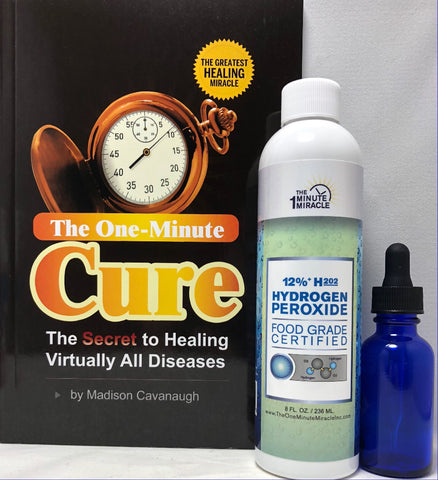
The extra oxygen atom is released leaving H20 (water). When exposed to other compounds hydrogen peroxide dismutates readily. (This can be slowed even further by storing the liquid in the freezer.) It boils at 152 degrees C and freezes at minus 2 degrees C.

When kept in the absence of light and contaminants, it dismutates (breaks down) very slowly at the rate of about 10% a year. When stored under the proper conditions, it is a very stable compound. Hydrogen peroxide is odorless and colorless, but not tasteless. (Bear with me: all this chemistry mumbo jumbo I'm going through actually will help you understand the importance of hydrogen peroxide.) In fact, it will quickly give up that extra atom of oxygen to falling rainwater to form hydrogen peroxide (H202). These single molecules combine with others to form ozone (03). This protective layer of ozone is created when ultraviolet light from the sun splits an atmospheric oxygen molecule (02) into two single, unstable oxygen atoms. Ozone consists of three atoms of oxygen (03). By now everyone's aware of the ozone layer that surrounds the earth. It contains one more atom of oxygen that does water (H20). Hydrogen peroxide should really be called hydrogen dioxide. If any substance is interesting, it's hydrogen peroxide. Before either condemning or endorsing hydrogen peroxide, let's take a real close look at what we're dealing with. Those opposed feel its ingestion is exceptionally dangerous, and only the foolhardy could think of engaging in such behavior.

Supporters consider it one of the greatest healing miracles of all time. When it comes to hydrogen peroxide therapy there seems to be only two points of view. 35% Food Grade Hydrogen Peroxide (Health and Beauty)


 0 kommentar(er)
0 kommentar(er)
